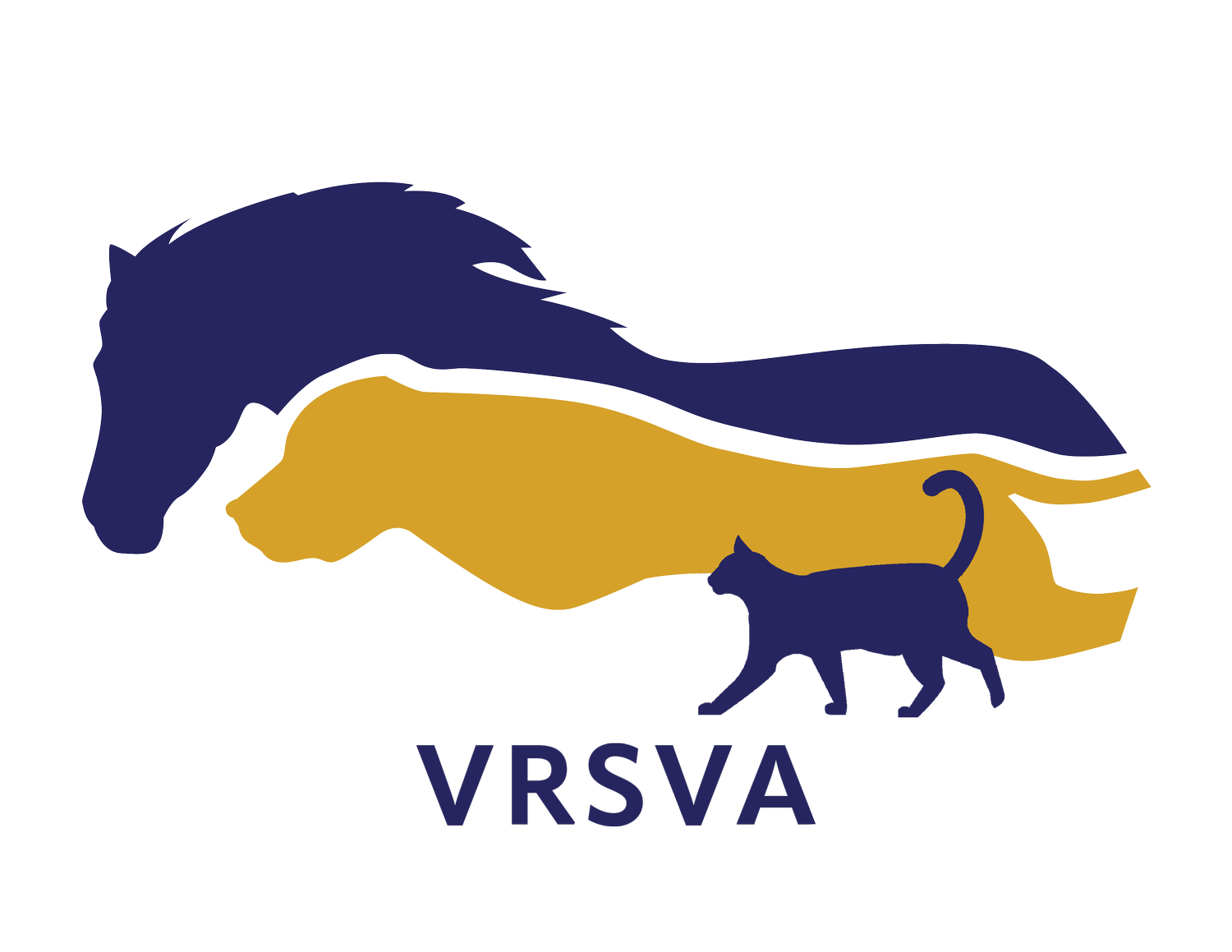Fear Free Rehabilitation: Healing with Less Stress
Successful rehabilitation is not only about restoring strength and mobility – it is also about managing the patient’s emotional well-being. At VRSVA, we integrate Fear Free techniques into our rehabilitation programs for both small animals and horses. This approach minimizes fear, anxiety, and stress -- helping patients engage more fully in therapy, and ultimately improving outcomes.
Why Emotional Well-Being Matters in Rehab
Stress is not just an emotional state – it has real effects on the body. Elevated cortisol, increased heart rate, and tense muscles can slow tissue healing, heighten pain perception, and make animals less willing to participate in therapy.
Research in both veterinary and human medicine shows that calmer patients demonstrate:
Improved cooperation with treatment protocols
More efficient neuromuscular re-education
Fewer stress-related complications
Shorter time to reach recovery goals
By incorporating Fear Free methods, we not only make patients more comfortable but also improve the efficiency and success of rehabilitation.
Core Components of Fear Free Rehabilitation
Patient-Centered Introductions
Animals are given time to acclimate to their environment, reducing sympathetic nervous system activation. For horses, this may mean quiet grooming in the stall before therapy begins. For dogs and cats, calm introductions and quick movement into a quiet exam room help prevent stress behaviors.
Low-Stress Handling
Handling techniques prioritize both comfort and safety. Small animals are encouraged to settle into comfortable positions on a mat, a bed, or even their owner’s lap, with gentle guidance and supportive positioning aids used to maintain natural movement patterns throughout therapy. Horses are positioned with adequate space to move, and handlers use “touch gradients” — beginning work at less sensitive areas like the withers or shoulder before progressing to more sensitive regions. This gradual approach helps reduce startle responses and fosters trust.
Positive Reinforcement
High-value rewards help patients associate therapy with positive experiences. Reward preferences vary by species and personality, but most animals respond well to palatable treats, calm verbal praise, and gentle petting or scratching in favorite spots. Many dogs are also motivated by toys, which are utilized if needed.
Environmental Modifications
For dogs and cats, tools such as pheromone diffusers, non-slip surfaces, soothing background sounds, and calming color schemes help create a low-stress environment. For horses, environmental adjustments may include quiet work areas away from herd distractions, consistent and familiar footing, and minimizing sudden noises or unexpected activity nearby.
Tailored Session Structure
Each session is designed around the animal’s unique emotional threshold. If stress indicators are observed — such as avoidance, tense posture, or vocalization — we adjust with breaks, shorter repetitions, or alternative exercises. Dogs may show stress through panting or yawning, while horses may pin their ears or swish their tails.
How Owners Play a Role
Owners can be essential partners in Fear Free rehab. With guidance, they can:
Recognize early signs of stress -- like lip licking in dogs, crouching in cats, or tension in a horse’s muzzle or posture.
Use calm, consistent handling and positive reinforcement at home.
Provide comfort during rehab sessions by being present and supportive.
This teamwork strengthens the bond between animal, owner, and care team, while improving long-term results.
Benefits for All
Patients: Reduced anxiety, improved cooperation, and better outcomes across species.
Owners: Confidence in the process, stronger trust in the veterinary team, and reassurance that emotional health is valued as much as physical recovery.
Veterinarians: Smoother sessions, safer handling, and stronger compliance with treatment plans.
Conclusion
Fear Free practices are an integral part of evidence-based rehabilitation medicine, both for small animals and horses. Just as we individualize therapeutic exercises or pain management protocols, addressing emotional well-being supports both short-term progress and long-term quality of life. At Veterinary Rehabilitation Services of Virginia, our Fear Free approach blends advanced clinical therapies with compassionate care, creating an environment where patients heal more effectively, owners feel supported, and veterinary professionals see better case outcomes.
